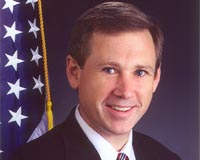| . |  |
. |
Washington (UPI) May 22, 2009 There's one thing that Bush administration Republicans and Obama administration Democrats agree on when it comes to national security issues: The day of major land wars between major industrialized states is over. In fact the nearest thing there has been to such a war in the past generation was between two relatively small states -- Iran and Iraq, which fought a bitter ground war that cost close to a million dead -- possibly many more -- from 1980 to 1988. The idea that such a tragedy could occur again in modern Europe, six and a half decades after World War II ended, is inconceivable to liberals and conservatives alike in Washington. The possibility of having to fight such a war is even more appalling and inconceivable to the military planners who are paid to prepare for it in European nations and in NATO alliance headquarters in Brussels, Belgium. NATO and U.S. analysts alike therefore have essentially embraced the concept popularized by Israeli military historian Martin Van Creveld in his famous book "The Transformation of War" -- that large-scale conventional military operations have become outmoded and inconceivable. In the United States, versions of this idea are held, from liberal Democrats who believe, along with Europeans, that economic aid and diplomacy are far more important than raw military power, to neo-conservatives who believe that high-tech, precision weapon, state-of-the-art communications technology means the Pentagon can cut 30 tons off the weight of its Main Battle Tanks. Another view, shared by liberals, neoconservatives and small-government free-traders, is that large production runs on expensive ground weapons like artillery, Main Battle Tanks or the U.S. Army's HIMARS multiple-launch rocket system are completely unnecessary. More traditional analysts like the late Lt. Gen. William Odom of the U.S. Army or Peter Brookes of the conservative Heritage Foundation in Washington have argued that the U.S. Army and Marine Corps need to retain a balanced and comprehensive set of options, including the ability to wage old-fashioned, large-scale combat operations against armies fielded by the major industrialized powers. But these arguments are increasingly ignored or dismissed as insufficiently modern or sophisticated by the armchair strategists in many Washington think tanks. They didn't get much respect when Defense Secretary Donald Rumsfeld and his acolytes ran the Pentagon, either. However, the armed forces commanders and procurement chiefs of the armies of Russia, India and China don't agree with the Bush and Obama administration gurus. They have been investing in ambitious conventional land war military systems big time since the 21st century began. The Russian conquest of one-third of the territory of the former Soviet republic of Georgia in only five days from Aug. 8-12, 2008, served notice that the revived Russian armed forces are a lot more formidable than they have been for 30 years. They may not be able to take on the U.S. Army head-to-head, but they don't have to. The U.S. Army and Marine Corps have been bogged down in Iraq for more than six years and have been worn down, not so much by casualties as by overlong, grueling and exhausting deployments. NATO's European members have not moved to fill the slack by either expanding their numbers of trained combat troops or by expanding their conventional military forces. Presumably if Russia, Belarus or any other nation were to invade or threaten the NATO member states of Poland, Lithuania, Latvia or Estonia, the other alliance members would immediately move to their aid, as they are required to do by the famous Article 5 of the 1949 Washington Treaty that created the North Atlantic Treaty Organization. But if the Russian army were to invade Georgia again, or occupy the eastern regions of Ukraine, or take other military action against former Soviet republics in the Caucasus or in Central Asia, it is highly unlikely NATO could instantaneously or rapidly send significant numbers of troops that could make any operational difference in time. That leaves the legendary NATO alliance, despite its 28 member states and 800 million total population, looking very much like a paper tiger. Share This Article With Planet Earth
Related Links Learn about the Superpowers of the 21st Century at SpaceWar.com Learn about nuclear weapons doctrine and defense at SpaceWar.com
 US lawmakers seek deeper US-China ties on visit
US lawmakers seek deeper US-China ties on visitWashington (AFP) May 22, 2009 China-bound US lawmakers said Friday that their visit aimed to deepen cooperation on pulling the world economy out of its slump and to ease any worries about investments in skyrocketing US debt. Democratic Representative Rick Larsen and Republican Representative Mark Kirk, the co-chairs of the congressional US-China Working Group, arrive at their first stop, Hong Kong, on Monday. In sepa ... read more |
|
| The content herein, unless otherwise known to be public domain, are Copyright 1995-2009 - SpaceDaily. AFP and UPI Wire Stories are copyright Agence France-Presse and United Press International. ESA Portal Reports are copyright European Space Agency. All NASA sourced material is public domain. Additional copyrights may apply in whole or part to other bona fide parties. Advertising does not imply endorsement,agreement or approval of any opinions, statements or information provided by SpaceDaily on any Web page published or hosted by SpaceDaily. Privacy Statement |